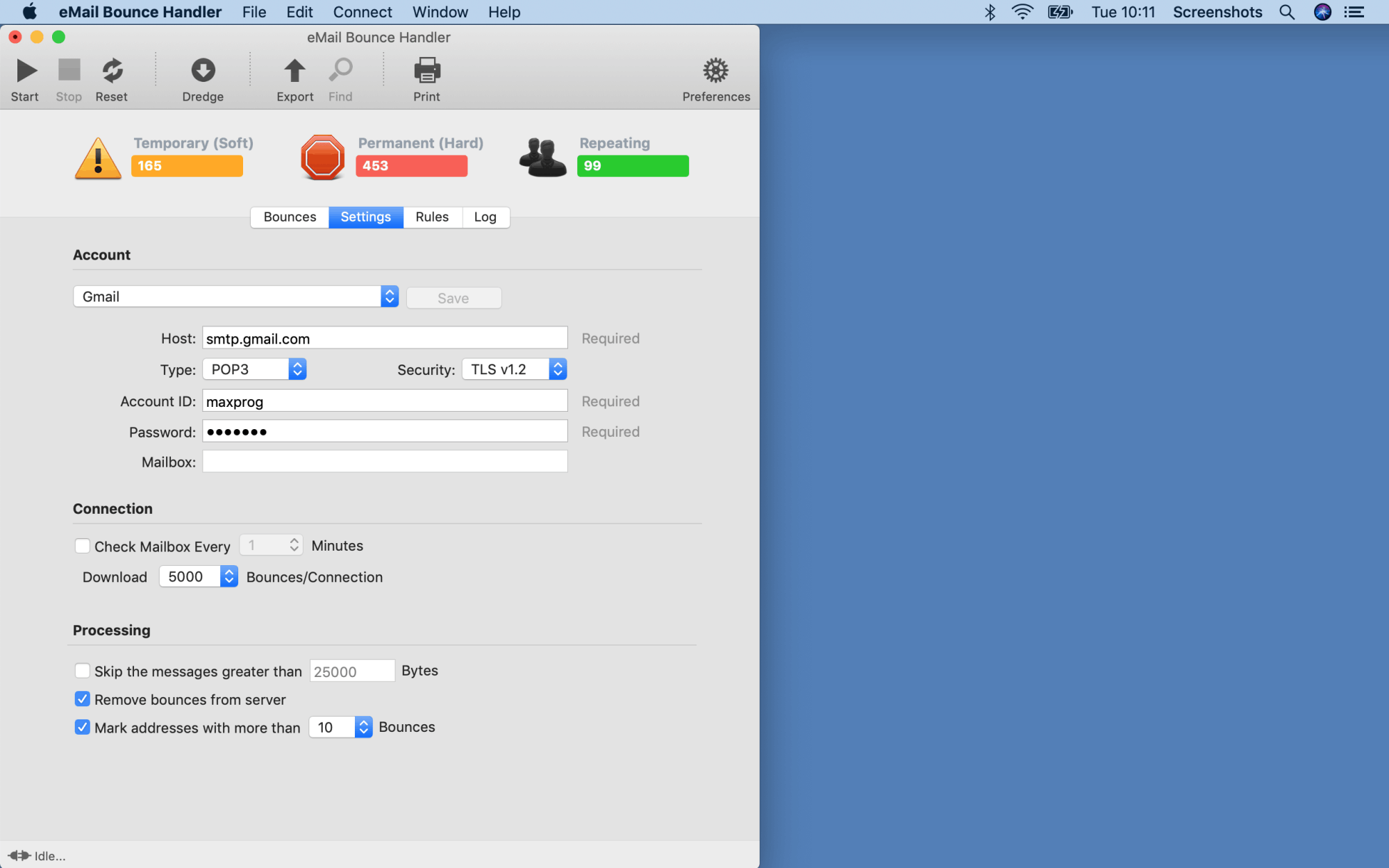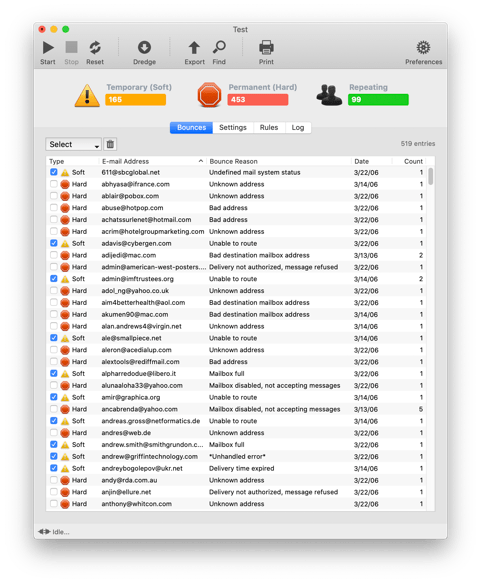


- Email bounce handler how to#
- Email bounce handler update#
- Email bounce handler manual#
- Email bounce handler code#
Email bounce handler code#
Sample code to handle complaints is: /// Process complaints received from Amazon SES via Amazon SQS. / Represents an Amazon SES bounce notification. / Represents the bounce or complaint notification stored in Amazon SQS. We will use the open-source JSON.NET library. You will need to define some classes to simplify bounce notification parsing from JSON into.

If the bounce type is undetermined, you should manually review the bounce and act accordingly.
Email bounce handler manual#
Certain transient bounces require manual intervention before the message can be delivered (e.g., message too large or content error). The amount of time you should wait before resending to the address that generated the transient bounce depends on the transient bounce type. A transient bounce indicates that the recipient’s ISP is not accepting messages for that particular recipient at that time and you can retry delivery in the future. A permanent bounce indicates that you should never send to that recipient again. Bounce ProcessingĪmazon SES will categorize your hard bounces into two types: permanent and transient.
Email bounce handler update#
When our application runs, it will process queued notifications and update the email list. We will configure each Amazon SNS topic to publish to separate SQS queues. Amazon SNS integrates with Amazon Simple Queue Service (Amazon SQS), which is a durable messaging technology that allows us to persist these notifications. Also, since the bounce and complaint handler will not run 24/7, we need these notifications to persist until the application processes them. To implement this solution, we will use separate Amazon SNS topics for bounces and complaints to isolate the notification channels from each other and manage them separately. You would like to automate this process using Amazon SNS notifications with a scheduled task.

You review bounces and complaints once each day, manually interpret the bounce messages in the incoming email, and update the list. You store the list in a database and send one email per recipient through Amazon SES. Let’s assume you use Amazon SES to send monthly product announcements to a list of email addresses. The format of bounce and complaint messages varies between ISPs, but Amazon SES interprets these messages and, if you choose to set up Amazon SNS topics for them, categorizes them into JSON objects. When Amazon SES receives a bounce or complaint message from an ISP, we forward the feedback message to you. BackgroundĪmazon SES assigns a unique message ID to each email that you successfully submit to send. In this post, we will show you how you might manage your email list using the information you get in the Amazon SNS notifications.
Email bounce handler how to#
You can refer to the Amazon SES Developer Guide or Jeff’s post to learn how to set up this feature. As you may have seen in Jeff Barr’s blog post or in an announcement, Amazon Simple Email Service (Amazon SES) now provides bounce and complaint notifications via Amazon Simple Notification Service (Amazon SNS).


 0 kommentar(er)
0 kommentar(er)
